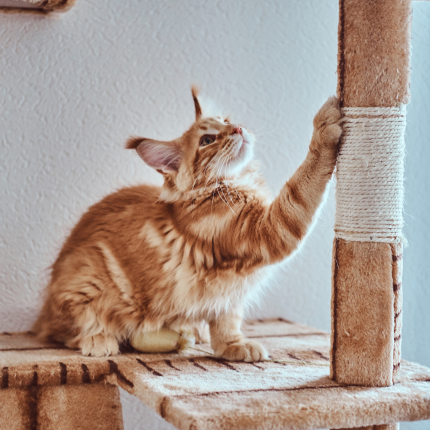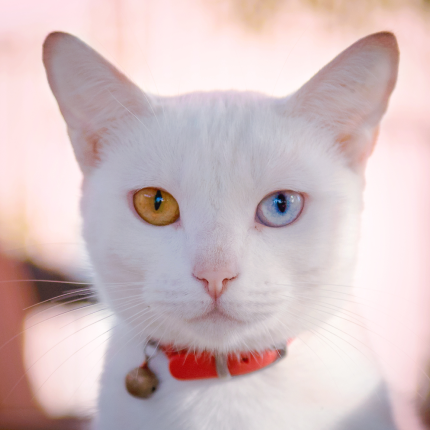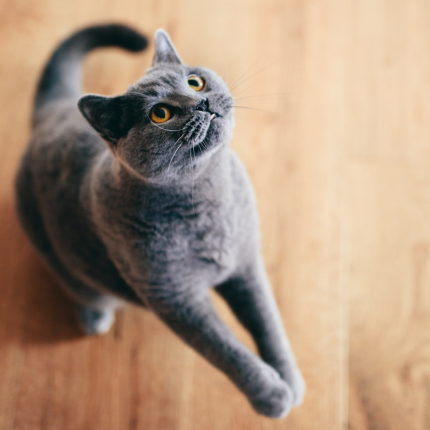Why You Shouldn’t Declaw Your Cat

You may consider these arguments against declawing a cat or declawing along with neutering if a veterinarian suggests it. However, before deciding on your pet’s surgery, have all the facts.
Declawing is not Nail Trimming
Declawing involves amputation of the first joint of the cat’s toes. Whether this procedure is performed with a scalpel, guillotine-type cutter, or laser, it is a major surgery.
advertisement
Declawing is Painful
It is equivalent to 10 toe amputations (if only the front feet are declawed). In the early stages, pain medications may help, but phantom pain may persist as nerve endings heal. In contrast to neutering, declawing can be excruciating for an animal and lead to serious behavior problems.
Cats do not benefit from declawing
Declawing has no positive effects on the cat, unlike neutering, which is beneficial health-wise and behaviorally. Most owners do it out of convenience.
A Cat’s Chief Weapon of Defense is Robbed
The typical counter-argument is, “My cat is indoors only.” But, unfortunately, even indoor cats sometimes escape. If a cat is declawed, it cannot stand a chance against a large dog, a larger cat, or a predator. Even though it still has teeth, a declawed cat wouldn’t stand a chance against a predator.
Litter Box Problems May Result From Declawing
Due to their natural tendency to bury waste with claws, most cats use litter boxes relatively quickly. A declawed cat will likely associate the pain associated with digging in litter or other substances with the litter box. As a result, they may not use the litter box at all.
Biting problems can sometimes occur after declawing
If cats cannot give a quick warning scratch, they often rely on the next line of defense: their teeth. A declawed cat may resort to biting when in danger or feeling scared.
Toes and claws provide cats with exercise
Observe a cat stretching on a carpet or vertically with a scratching post. Using its claws, it will grab the carpet or sisal, pulling and stretching its muscles. Claws play an essential role in cats’ muscle tone and agility.
Declawing could lead to joint problems later on
Cats walk on their toes — also known as digitigrade. Your cat will walk differently if the first digit of its toe is removed, and its joints may be affected. Your cat may eventually develop arthritis in its hips and other joints. Your cat’s long-term health can be seriously compromised if you remove its claws.
advertisement
Declawing Has Humane Alternatives
Before making such a drastic and permanent decision, consider your cat’s needs seriously, and there may be more humane alternatives. For example, vinyl nail caps are a healthy and relatively easy alternative. Smooth caps that glue over your cat’s claws come in various colors, including clear, glitter, and glow-in-the-dark. The nail caps are generally well tolerated by cats, but they may take some time to get used to. Each set of caps lasts four to six weeks as your cat’s claws grow.

Featured Articles

Polydactyl Cats: Just More Beans to Love
Polydactyl cats have become extremely popular in recent times. As a result, more and more people are interested in learning more about this six-toed cat and want to get one of their own. If you are a cat lover intrigued by polydactyl cats, you have come to the right place….

The Odd-Eyed Cat (AKA Heterochromia)
Cats are already beautiful and fascinating creatures, but people are bound to take notice when they have something as captivating as two different colored eyes. Odd-eyed cats always have one blue eye paired with either a green, yellow, or brown eye. This form of heterochromia occurs in other animals, including…

Greebles and Cats: The Origin and the Meaning
You may have seen an internet sensation concerning cats labeled “greebles.” Feel out of the loop? We’re here to help you. In 2019, Reddit user /user/literallyatree commented on a Reddit post about a cat that looks like it’s trying to slap a ghost. This user commented: “My family calls things…
